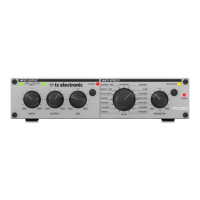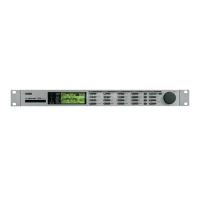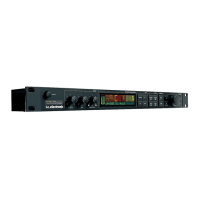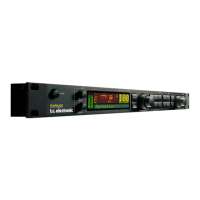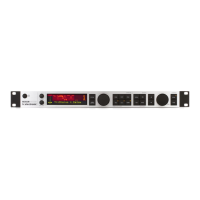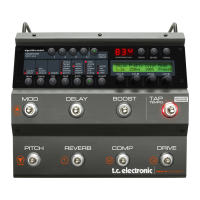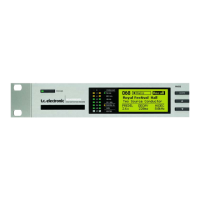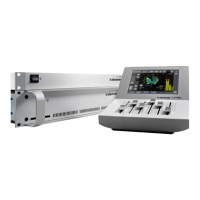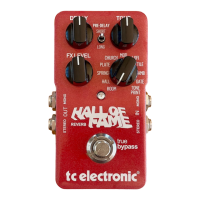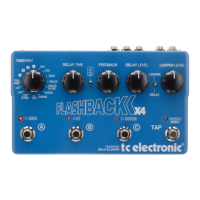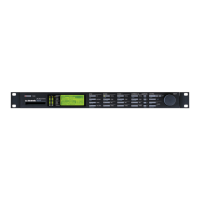
Do you have a question about the TC Electronic M2000 and is the answer not in the manual?
| Type | Multi-Effects Processor |
|---|---|
| A/D/A Conversion | 24-bit |
| Display | LCD |
| Algorithms | Reverb, Delay, Dynamics |
| Sampling Rate | 48 kHz |
| Analog Inputs | 2 x XLR/TRS combo |
| Analog Outputs | 2 x XLR, 2 x 1/4" TRS balanced |
| Digital Inputs | AES/EBU, S/PDIF |
| Digital Outputs | AES/EBU, S/PDIF |
| MIDI | In, Out |
| Presets | 99 user, 99 factory |
| Frequency Response | 20 Hz - 20 kHz |
| Footswitch | Optional |
| Number of Effects | Multiple simultaneous effects |
| Dimensions (W x H x D) | 483 x 44 x 200 mm (19" x 1.75" x 7.9") |
Step-by-step guide for storing presets with naming and location selection.
Configuration of analog/digital input sources and master clock sample rates.
Defines the consumer and professional ranges for analog input/output levels.
Details the adjustable digital input gain and the auto-level setup function.
Explains Serial (sequential effects) and Parallel (mixed effects) routing modes.
Details Dual Input (split mono) and Stereo (linked engines) routing modes.
Setting MIDI input channel, filter, offset, and SysEx ID for control.
Setting MIDI output channel, filter, and offset for transmitting data.
Configuring MIDI mapping, program changes, and security lock.
Managing memory protection, snapshot protection, and backing up presets.
Displaying received MIDI messages like program changes, notes, and controllers.
Using the built-in chromatic tuner for guitar, bass, or manual note selection.
Navigating and adjusting parameters within the standard edit menu.
Adjusting relative levels between the two engines in a combined preset.
Instructions on how to access the reset menu by holding bypass keys.
Details on loading default settings, storing user defaults, and setting user name.
Explains resetting system parameters and clearing all user presets.
Details on connectors, formats, sample rates, and frequency response for digital audio.
Specifications for analog inputs and outputs, including levels and conversion.
Solutions for no power light, input meters not peaking, and signal on one input.
Addresses issues with no sound, inability to turn off, phased sound, and pedal errors.
Procedures for testing the functionality of front panel keys and the adjust wheel.
Instructions for testing LEDs, the LCD display, and digital/analog I/O connections.
Covers tests for MIDI I/O, pedal input, PCMCIA card, battery, and system integrity.
